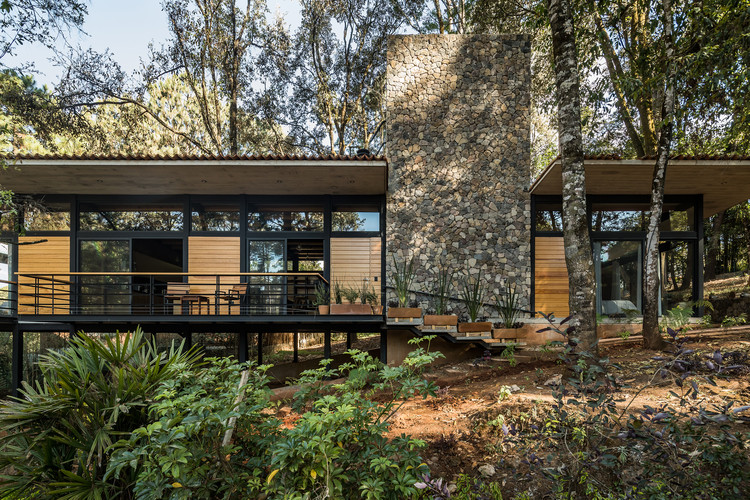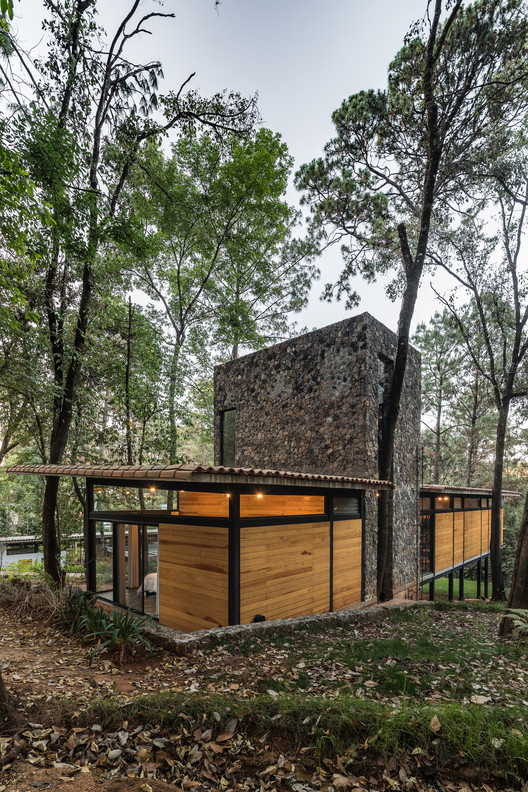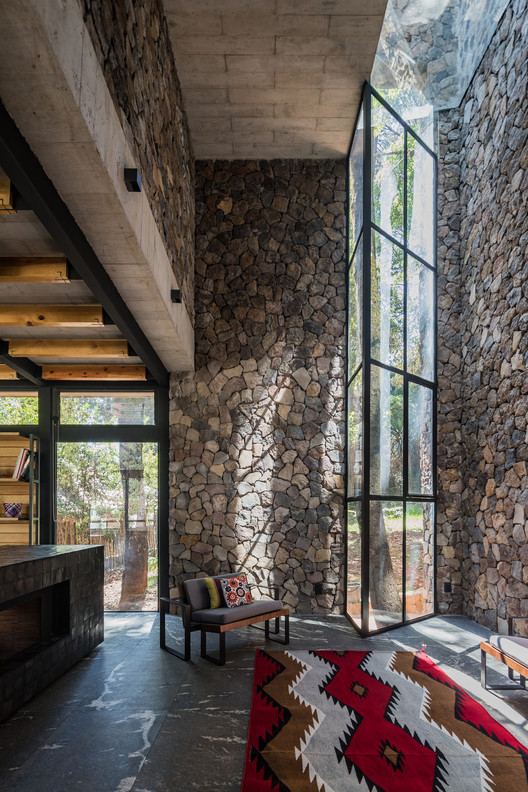
-
Architects: saavedra arquitectos
- Area: 220 m²
- Year: 2018
-
Photographs:Onnis Luque
-
Manufacturers: Saint-Gobain, CASTEL, Grupo Arca, MACERE México, Rotoplas
-
Lead Architect: Rodrigo Saavedra Pérez-Salas

Text description provided by the architects. Casa Luzia is the second country house of a master plan of three houses in Avándaro, Mexico. (the first one is M House). This second land lot has a considerable downslope from the front to the back of the terrain. It rains with intensity most of the year and the lot is located in the natural pad of the rainwater. The big forest trees of Avandaro open to the center of the lot. The architectural program had to contemplate two different scenarios: a young couple with children or two young couples.































